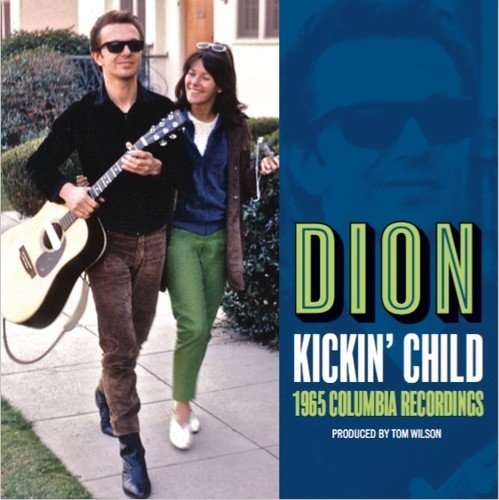
Videos by American Songwriter
Dion
Kickin’ Child
(Norton/Columbia)
Rating: 4 out of 5 stars
It’s unfortunate that an artist as talented and influential as Dion has, for the most part, been relegated as a supporting player in the history of music. Although a member of the Rock and Roll Hall of Fame (fellow New Yorker Lou Reed famously provided his poetic 3-minute induction 1989 speech), Dion’s “Bronx soul” music, along with his forays into blues, and particularly ringing folk-rock, haven’t been celebrated by the masses.
This issue (it’s not a reissue since it never was officially released) of a “lost” 1965 album Dion initially recorded for Columbia but shelved, is a prime example of how he predated the electric folk boom of the ’60s that Dylan, the Byrds et al. took to the bank, with worldwide legendary acclaim.
These sessions were the bridge between Dion’s pop/doo-wop late ’50s/early ’60s hits and his stirring, still moving, topical “Abraham, Martin and John” classic from 1968. In the years preceding these 1965 recordings, Dion shifted to blues, best represented by the superb Bronx Blues 1962-1965 compilation, which also included a few songs now placed back in their proper context on Kickin’ Child.
According to Dion fan and fellow Bronx-based musician Scott Kempner’s (The Del-Lords) fascinating and informative liner notes, Dion first suggested that producer Tom Wilson add an electric band to Dylan’s version of “House of the Rising Sun.” Dylan loved it, allegedly moving him to plug in and add a band on one side of 1965’s Bringing it all Back Home. The same approach was used by Wilson on Simon & Garfunkel’s initially all-acoustic “Sound of Silence” track, and between the two, it seems Dion’s idea helped formulate the electric approach to folk that remains a crucial turning point in music history.
These 15 songs, also produced by Wilson, are inescapably Dylan influenced (not surprisingly, three Dylan covers are included), with 10 written or co-composed by Dion. Dated? Sure, but also brimming with the drive and melodic inspiration so prominent in other Wilson-produced recordings of the period, in particular Highway 61 Revisited. Dion, who reportedly was heavily into heroin around this time (he kicked it in 1968), sounds in terrific form, singing with the determination and sensitivity that songs such as Dylan’s “Farewell” require. His bluesy approach to originals like “You Move Me Babe” dovetails beautifully with the chiming folk style favored for these recordings. And why a track as brilliant as “My Love” wasn’t a hit single in the “California Dreaming” era remains a mystery. Chalk it up to the right place/wrong time issues that have dogged Dion for decades.
Sonically, these remasters are full of life and a youthful, vibrant crispness that make you wonder why it took 50 years for the bulk of them to make an appearance. The version of Dylan’s “It’s All Over Now Baby Blue” (also recorded in 1965) is stunning and shimmering. And even if the title track is a little too Dylan sounding, Dion has every right to recreate a style he was reportedly at the crossroads of inspiring.
As anyone who has heard 2016’s frustratingly under-the-radar New York is My Home knows, Dion still has the singing/songwriting goods. While these recordings may not be as ground-breaking, especially in retrospect, as the Dylan songs of the same time frame, Kickin’ Child is an enthralling listen. It’s a historically noteworthy release that finally sees the light of day on this terrific, lovingly assembled edition that few, including the artist himself (who also contributes to the 10 pages of liner notes and rare photos), thought would ever be commercially available in the format and running order in which it was created.
